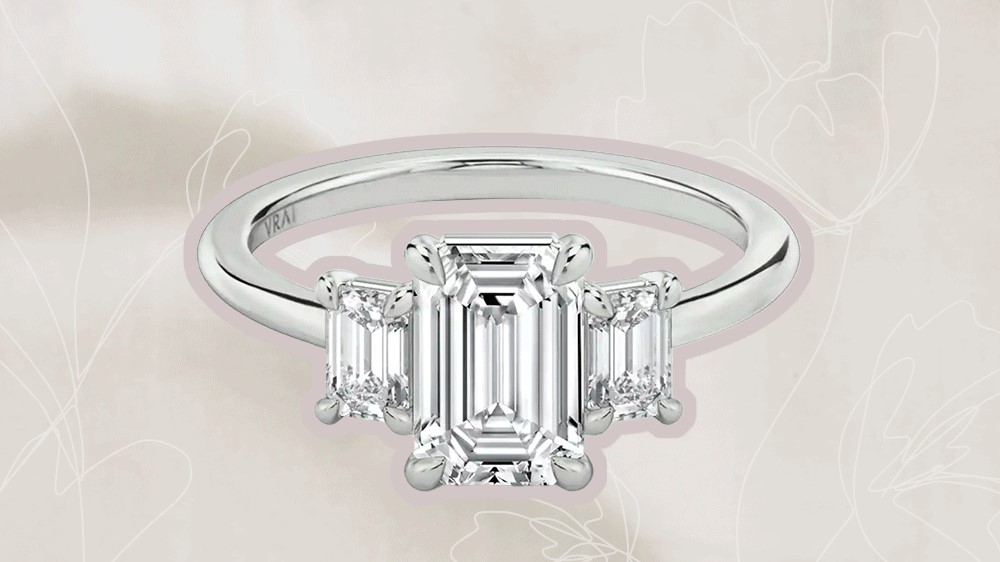
Lab-grown diamonds are becoming increasingly popular due to their ethical sourcing, affordability, and environmental benefits. Like natural diamonds, lab-grown diamonds are evaluated using the 4Cs—cut, color, clarity, and carat weight. Understanding these four critical factors will help you make informed decisions when purchasing a lab-grown diamond. Let’s explore the 4Cs in detail and see how they impact the quality of lab-grown diamonds.
What Are Lab-Grown Diamonds?
Lab-grown diamonds, also known as synthetic diamonds or man-made diamonds, are diamonds that are created in a laboratory under conditions that replicate the natural processes that occur in the Earth. They are composed of the same carbon structure as natural diamonds and share the same physical, chemical, and optical properties.
Lab-grown diamonds offer several advantages over mined diamonds, including a lower environmental impact, the assurance of ethical sourcing, and a more budget-friendly price tag. However, to assess the quality of a lab-grown diamond, it is essential to understand how the 4Cs apply to them.
The 4Cs of Lab-Grown Diamonds: A Deep Dive
1. Cut: The Heart of the Diamond’s Beauty
The cut of a diamond is often considered the most important of the 4Cs, as it affects the diamond’s brilliance and sparkle. Unlike natural diamonds, which may be cut based on the diamond’s rough shape and size, lab-grown diamonds are crafted with precision.
Lab grown diamonds 4Cs can be cut in a variety of shapes, including round, princess, emerald, and cushion. The quality of the cut is determined by how well the diamond’s facets interact with light, and it is assessed by factors like symmetry, proportions, and polish. A well-cut lab-grown diamond will display maximum brilliance, ensuring it shines brightly and captures light beautifully.
Cut Grades for Lab-Grown Diamonds:
- Excellent: Reflects maximum light and brilliance.
- Very Good: Slightly less brilliance but still dazzling.
- Good: Decent sparkle but may have minor visual imperfections.
- Fair: Lower brilliance with noticeable light leakage.
- Poor: Suboptimal cut that may appear dull.
2. Color: Grading the Diamond’s Hue
The color of a diamond refers to the presence of any color within the diamond. The most valuable diamonds are colorless, while those with a yellow or brown tint are less valuable. Lab-grown diamonds are graded using the same color scale as natural diamonds, which ranges from D (colorless) to Z (light yellow or brown).
Lab-grown diamonds can be made with precision, ensuring that the color grade is consistently controlled. Most lab-grown diamonds fall within the D-H color range, which is considered near-colorless. However, diamonds with higher color grades (D-F) tend to cost more due to their rarity and exceptional appearance.
Color Grades for Lab-Grown Diamonds:
- D-F: Colorless to near-colorless, the most sought-after grades.
- G-H: Near-colorless, a good balance of affordability and visual appeal.
- I-J: Light yellow or brown hues are noticeable to the untrained eye.
3. Clarity: The Presence of Inclusions
Clarity refers to the presence of internal or external imperfections in the diamond, known as inclusions and blemishes. The fewer inclusions a diamond has, the higher its clarity grade. Lab-grown diamonds are created under controlled conditions, which can result in fewer imperfections compared to natural diamonds.
Inclusions in lab-grown diamonds are typically microscopic, and they may be more challenging to spot with the naked eye. The clarity scale ranges from Flawless (no inclusions or blemishes visible under 10x magnification) to Included (visible imperfections).
Clarity Grades for Lab-Grown Diamonds:
- Flawless (FL): No inclusions or blemishes visible under 10x magnification.
- Internally Flawless (IF): No inclusions, but minor surface blemishes may be present.
- Very Very Slightly Included (VVS1/VVS2): Extremely small inclusions, only visible under magnification.
- Very Slightly Included (VS1/VS2): Small inclusions that are difficult to detect with the naked eye.
- Slightly Included (SI1/SI2): Inclusions visible under magnification, but not noticeable to the naked eye.
- Included (I1/I2/I3): Inclusions visible without magnification, often affecting the diamond’s transparency.
4. Carat Weight: The Size of the Diamond
Carat weight measures the size of a diamond. One carat equals 200 milligrams, and larger diamonds are rarer and more expensive. However, carat weight alone does not determine a diamond’s value. A larger lab-grown diamond may have a lower price than a natural diamond of the same size due to the lower cost of production.
It’s important to note that two lab diamonds of the same carat weight may vary in price and appearance due to differences in cut, color, and clarity. When considering carat weight, ensure that the diamond’s other attributes align with your preferences and budget.
Carat Weight and Pricing:
- Larger lab-grown diamonds typically have a lower cost per carat than natural diamonds.
- Smaller lab-grown diamonds with high color and clarity grades may still be priced competitively.
Conclusion: Finding the Perfect Lab-Grown Diamond
When shopping for a lab-grown diamond, the 4Cs—cut, color, clarity, and carat weight—play a crucial role in determining the diamond’s overall quality and price. By understanding how each factor contributes to the diamond’s value, you can make an informed decision that aligns with your preferences, budget, and ethical values.
Whether you’re looking for a sparkling engagement ring or a stunning piece of jewelry, the lab-grown diamond market offers a wide range of options. Remember, the quality of your diamond is a combination of its cut, color, clarity, and carat weight, so take the time to compare diamonds based on these 4Cs to find the perfect one for you.
Why Choose Lab-Grown Diamonds?
Lab-grown diamonds not only offer ethical and environmental benefits but also provide a high-quality option at a fraction of the cost of mined diamonds. By understanding the 4Cs, you’ll be equipped to select a lab-grown diamond that suits your style and budget, all while enjoying the peace of mind that comes with knowing your diamond is responsibly sourced and created.
